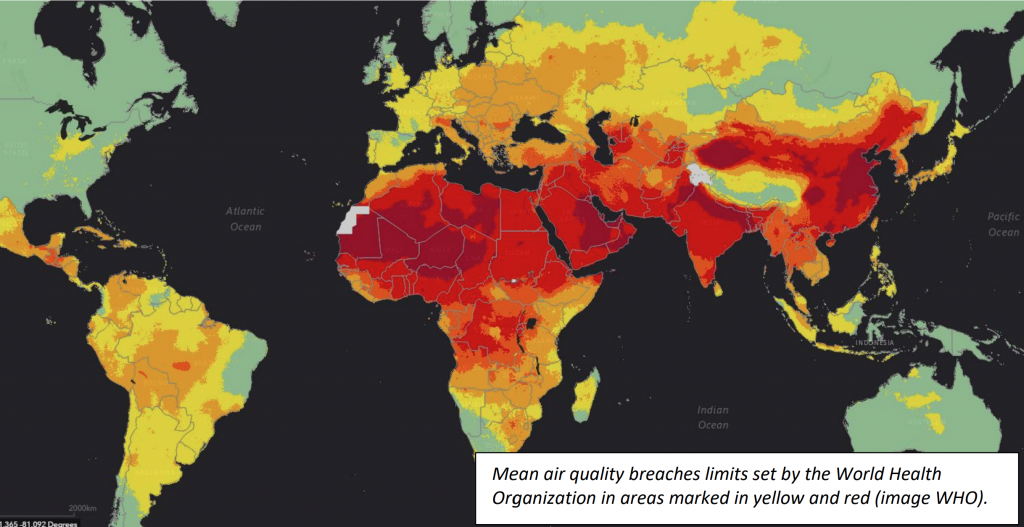AC-VC: What Have They Been Up To?
Proposed as one of the first four pilot virtual constellations in 2006, the Atmospheric Composition Virtual Constellation (AC-VC) was formed to sustain a systematic capability to provide essential observations of atmospheric composition from space. The constellation set out with the goal of addressing the following questions:
- How is ozone recovery responding to the Montreal protocol and what are the effects of climate change on the stratospheric ozone?
- How do changes in regional air quality affect ecosystems? What are the impacts of long range transport of pollution on local air-quality?
- How do changes in atmospheric composition (radiatively active gases and aerosols) affect climate?
Currently led by Ben Veihelmann from the European Space Agency (ESA), Barry Lefer from the USA’s National Aeronautics & Space Administration (NASA), and Hiroshi Tanimoto from Japan’s National Institute for Environmental Studies (NIES), AC-VC’s goal is to collect and deliver data to improve monitoring, assessment, and predictive capabilities for changes in the ozone layer, air quality, and climate forcing associated with changes in the environment through coordination of existing and future international space assets.
The AC-VC observes a large number of geophysical parameters related to atmospheric composition, which include:
- Ozone (O3) and constituents relevant to ozone chemistry in the troposphere and stratosphere (including hydrogen, nitrogen, chlorine, and bromine containing compounds)
- Tropospheric constituents important to air quality (e.g. O3, NO2, SO2, H2CO, C2H2O2, H2O, aerosols, cloud parameters, and UVB radiation)
- Greenhouse gases (e.g. CO2 and CH4)
- Gases and particles emitted by volcanic eruptions (e.g. SO2 and ash)
In April 2011, AC-VC published a whitepaper titled A Geostationary Satellite Constellation for Observing Global Air Quality: An International Path Forward, detailing CEOS Agency plans for geostationary satellites to obtain atmospheric composition measurements for characterising anthropogenic and natural distributions of tropospheric ozone, aerosols, and their precursors. The paper identified that an integrated observing system for atmospheric composition is key to pollution abatement strategies for air quality as laid down in various international protocols and conventions, and as such, harmonising the planned geostationary missions to be contemporaneous and have common observing capabilities and data distribution protocols would synergistically enable critically needed understanding of the interactions between regional and global atmospheric composition and of the implications for air quality and climate. The paper also made a number of recommendations for the community.
Another whitepaper was published in November 2018 by the AC-VC Greenhouse Gas Team, titled A Constellation Architecture for Monitoring Carbon Dioxide and Methane From Space, prepared in response to the reporting measures announced as part of the COP21 Paris Agreement. The paper explains how estimates of carbon dioxide (CO2) and methane (CH4) from space-based sensors can be integrated into a global carbon monitoring system and summarises the state of the art in the space-based measurements and the tools needed to retrieve CO2 and CH4 fluxes from these data. It also provides a roadmap for existing and planned space-based CO2 and CH4 sensor types and performance, observing strategies, launch dates and operational timelines.
October 2019 saw AC-VC publish a whitepaper focused on Air Quality, titled Geostationary Satellite Constellation for Observing Global Air Quality: Geophysical Validation Needs. The paper identifies key missions for the Geostationary Air Quality (Geo-AQ) constellation, and describes the validations needs and inter-mission consistency targets. Recommendations are also made for joint validation campaigns with exchange of reference airborne and ground-based instruments, and for the further development of inter-calibration approaches.
AC-VC is currently preparing a new whitepaper, focusing on the air quality aspects of aerosols. The paper was recently presented in draft form at the 2022 SIT Technical Workshop, and the team are now preparing for endorsement at CEOS Plenary in November. The draft can be viewed here: Monitoring Surface PM2.5: An International Constellation Approach to Enhancing the Role of Satellite Observations. The whitepaper takes stock of the current and planned sensors with strong potential for constraining PM (particulate matter), and of schemes used for generating particulate pollution products and services, and makes specific and actionable recommendations are made the role of satellites in constraining PM levels and to help in creating satellite-informed particulate pollution products. Thirty-five authors from academia and space agencies were involved in the production of this whitepaper, including experts on aerosol observations and air quality modelling.

Figure from Monitoring Surface PM2.5: An International Constellation Approach to Enhancing the Role of Satellite Observations.